Isla la culebra puerto rico: Best of Culebra Puerto Rico Tourism 2022 – Travel Guide
Culebra, Puerto Rico
(koo-LAI-brah)
Culebra (or “Snake”) island is also known as “Isla Chiquita” (small island) and
“Ultima Virgen” (last virgin) due to its position at the end of the Virgin Islands archipelago.
Culebra was founded on October 27, 1880 by Cayetano Escudero.
The island is accessible by ferry from Fajardo, available twice a day ($4.50).
It is also accessible by plane, Culebra’s small airport provides domestic services to and from San Juan ($60 one-way).
The airport is served by Air Culebra from San Juan’s Luis Muñoz
Marin International Airport and by Vieques Air Link from San Juan, Fajardo and
Vieques.
Culebra Island Sunset
Culebra original names were “Isla Pasaje” and “Isla de San Idelfonso” in
honor of Bishop San Idelfonso de la Culebra. Cayetano Escudero was the first
Delegate of Culebra appointed by a Governmental order from Vieques on August 2, 1881.
In 1894, written reports indicated that there were 519 residents living in five communities: San Ildefonso,
Flamenco, San Isidero, Playa Sardinas I y II, and Frayle. There were 84 houses built, 24 of them in the San Ildefonso community.
There were 84 houses built, 24 of them in the San Ildefonso community.
The capital is Dewey, which contains most of the archipelagoes 2000 souls.
The municipality of Culebra includes all surrounding
islets: Norte,
Ballena, Geniquí, Tiburń, Sombrero, Matojo, Colorado,
Culebrita, Luis Peña (named after its second owner), Las Hermanas, El Mono, Lobo, Lobito, La Pela, La Pelita, Del Agua,
Yerba, Raton, Pirata, Verde, Botijuela, Alcarraza, Los Gemelos, and Piedra Stevens.
On June 26, 1903, US President Theodore Roosevelt established the Culebra Naval
Reservation. With the outbreak of WWII in 1939, the Culebra
Archipelago became the primary gunnery and bombing practice site for the U.S.
Navy and continued to be used for these purposes until 1975.
Many military relics, including tanks, remain in the area.
Points of Interest and Landmarks
On February 27, 1909, US President Theodore Roosevelt also
established a national wildlife refuge,
the Culebra National Wildlife Refuge
(one of the oldest refuges in the system) to protect large colonies of sea birds (with approx. 85
85
species), particularly terns, red-billed tropic birds and boobies, and
nesting sea turtles. Since then much of the island (about 20%) and the surrounding
23 islets including Culebrita are protected by the U.S. Fish and Wildlife
Service, making the islands one of only two nesting
sites for giant sea turtles in the U.S. The mangroves within the refuge
are a unique habitat which is vital for coastal wildlife. It is known that
this area is a favorite roosting site for the endangered brown pelican.
Culebra is a popular weekend destination because of its many pristine and beautiful beaches.
Snorkelers wander through its coral kingdoms, nodding
good-day to an astounding variety of sea creatures. Coral reefs in this area are
considered some of the most spectacular of the entire Caribbean region. Culebra’s rugged
countryside, outrageous beaches and small-scale tourist industry make the
25-square-mile island a Caribbean treasure for travelers.
Culebra Island
You can visit the surrounding cays, but permits are required and available
from the Fish and Wildlife Service, Box 510, Boquerón, PR 00622.
Visits are administered by Culebra National Wildlife Refuge and regulated
to insure protection of the rich and diverse resources.
For information write to: Refuge Manager, U.S. Fish and Wildlife
Service, General Delivery – Lower Camp Culebra, Puerto Rico 00775.
The island’s most popular beach is Flamenco Beach, because of its
white and soft sands, often rated among the best beaches in the United States and the world.
Camping is available at Flamenco Beach on the north shore. Culebra Campgrounds are government-run, for reservations
contact: Autoridad de Conservación y Desarrollo de Culebra, Attn: Playa
Flamenco, Apartado 217, Culebra, PR 00775. Also located in Culebra,
Carlos Rosario Beach and Tamarindo Beach are among Puerto Rico’s best snorkeling areas.
Culebrita is the largest cay near Culebra. Located on the north side, Culebrita’s beach is one the
finest examples of white sand and incredible clear waters.
Cayo Luis Peña
Luis Peña is the second largest cay near to Culebra. Many sandy
Many sandy
beaches can be found on this cay, Luis Peña beach included,
as well as wonderful coral reef located on the southwest side, perfect for snorkeling.
Other beaches:
- Brava Beach
- Larga Beach
- Las Vacas Beach
- Punta Soldado Beach
- Resaca Beach
- Zoni Beach
- Tortuga Beach (located in Culebrita)
The Musuem Fort Count Mirasol was the last military structure built by the Spanish in the New World.
Built in 1840 at the order of Count Mirasol, then governor of Puerto Rico.
The fort helped solidify Spanish control of the area, keeping British,
French, Dutch, and Danish colonists away and dissuading pirates from attacking Isabel Segunda.
Restored by the Institute of Puerto Rican Culture in 1991, the Colonial style building houses a
beautiful art gallery and a nice collection of indigenous artefacts and old Spanish weapons and coins . Open Wed-Sun, 8:30am – 4:20pm.
Admissions adults $3, children $2, (787) 741-1717.
The Culebra Historical Museum, also known as El Polvorín was built in 1905
and served as an ammunitions warehouse for the U.S. Navy. Today, the museum houses several exhibits
on U.S. military, endangered sea turtle species and the Tainos. Displays include archeological
artifacts, historical maps, photos and videos of the military occupation and life during the 1880s.
Located on Route 250, near Brava beach. Open Fri-Sun. Admissions $1. (787) 405- 3768.
Flamenco Beach
Transportation
Public transportion is available from the ferry terminal to Playa Flamenco.
For information about Ferry Schedules you may
contact the Puerto Rico Ports Authority at (787) 863-0705, (787) 863-0852 or
(787) 742-3161.
For information about Air Travel Schedules
you may contact Isla Nena Air Services, Inc., Vieques Air Link, Air Culebra
(Charter) at (787) 268-6951, or Flamenco Airways Inc. (Charter) at
(787) 723-8110 or (787) 725-7707.
Medical Services
Despite its size, Culebra has a health clinic with a pharmacy and a hospital with 24-hour emergency room.
Geography
Culebra is located 27 km (17 miles) east of Puerto Rico and 19 km (12 miles)
west to Saint Thomas, its dimensions are about 11 km (7 miles) long and 5 km
(3.5 miles) wide.
Culebra consist of the main island and twenty-three smaller islands that lie off its coast.
Culebra has sparse, thin soils and no permanent rivers or streams;
water is obtained from a desalinization plant. Grazing and
fishing are the principal activities of its few inhabitants.
Culebra is made up of 6 barrios (wards/districts):
- Dewey
- Flamenco
- Fraile
- Playa Sardinas 1
- Playa Sardinas 2
- San Isidro
Climate
Culebra annual precipitation is 42 inches, and its average temperature is 80°F. The driest month is March,
and the wettest is September.
10 Day Forecast
Zoni Beach
Accommodations
- Casa Cielo Rental Home (Guest House),
(617) 426-6278 - Casa Culebra (Guest House),
787-742-0227 - Casa Ensenada (Small Inn),
Toll-Free 1 (866) 210-0709
(787) 742-3559 - Casa Jardin (Guest House),
913-631-6530 - Club Seabourne (Small Inn),
1-800-981-4435
(787) 742-3169 - Coral Island Guest House (Bed & Breakfast),
(617) 773-0565 - Culebra Dive Resort (Guest House),
(787) 742-0129 - Harbour View Villas (Villa),
1-800-440-0070
787-742-3855 - Kokomo Hotel (Hotel),
787-742-1060 - Palmetto Guesthouse (Guest House),
(787) 742-0257 - Posada La Hamaca (Small Inn),
(787) 742-3516 - Rancho Buena Ventura (Guest House),
787-742-3374 - Tamarindo Estates Beach Resort (Villa),
787-742-3343 - Villa Arynar (Bed & Breakfast),
(787) 742-3145 - Villa Boheme (Guest House),
(787) 742-3508 - Villa Fulladoza (Guest House),
(787) 742-3576 - Casablanca Condo (Apartment/Condo),
609-646-4881 - Casita (Rental),
(787) 742-0803 - Culebra Beach Villas (Rental),
(787) 767-7575 - Mamacitas Guest House (Guest House),
(787) 742-0090
Restaurants
- Club Seabourne (Puerto Rican), (787) 742-3169
- Culebra Deli (Vegetarian), (787) 742-3277
- Dinghy Dock (American), (787) 742-0233
- Dinghy Dock Restaurant (Puerto Rican), (787) 742-0581
- El Batey Restaurant (Deli/Sandwich), (787) 742-3828
- El Caobo (Puerto Rican), (787) 742-3235
- Juanita Bananas Cocina Islena (Puerto Rican), (787) 742-3855
- Mamacitas Guest House, Restaurant & Bar (Puerto Rican), (787) 742-0090
- Marta’s al Fresco (American/Puerto Rican), (787) 742-3575
- Tamarindo Restaurant (Puerto Rican), (787) 742-0345
- White Sands Restaurant (Sea Food), (787) 742-3169
Festivals and Events
- Fiesta de Artesania – November
- Fiestas Patronales de Nuestra Sra.
 del Carmen – July
del Carmen – July
Every year, Culebra celebrates a patron saint festival. The festivities include dances, food, parades and religious processions.
(787) 742-3521 - Torneo de Pesca – March
Symbols
Flag
The Culebra flag consists of five vertical stripes, three alternate yellow and two green ones. The yellow central stripe has the map of Culebra in green.
Coat of Arms
The field is tierced in three, in the Spanish manner, vert, argent, or. The cross and the episcopal crozier
symbolize Bishop San Ildefonso, because originally the island was called San Ildefonso de la Culebra. The crowned
serpent (culebra means serpent) ondoyant in pale is the emblem of its name. The mailed arm refers to the coat of
the Escudero family, first settlers of the island. The laurel cross refers to the civic triumph reached when Culebra obtained the evacuation of the United States Navy. The crest is a coronet bearing two masts, their sails filled by the wind.
The crest is a coronet bearing two masts, their sails filled by the wind.
Anthem
The anthem was written by Edgardo Romero. The title is Culebra Isla preciosa…
Education
There are 3 public schools in Culebra,
education is handled by the Puerto Rico Department of Education.
Demographics *
Population
1,792
Puerto Rico: 3,285,874
Land Area: 11.62 sq mi
Density: 117.7 per sq mi
Median Age: 43.4
Sex: 53% female
Economics **
Per capita income
$15,830
Puerto Rico: $21,058
Median household income: $25,658
Puerto Rico: $21,058
Persons below poverty line: 31%
Housing, families and educational attainment *
Number of households
514
Housing units density:
138 (2013)
Persons per household: 2.67
High school grad or higher: 77.7%
Marital status: 30% married
* U. S. Census Bureau 2020 data, unless otherwise noted – Source: Quick Facts Puerto Rico.
S. Census Bureau 2020 data, unless otherwise noted – Source: Quick Facts Puerto Rico.
** U.S. Census Bureau 2016-2020
Map References
Coordinates: 18.3169° N, 65.2900° W
Zip Code: 775
Driving Distance from San Juan: 29.1 miles
Driving Time: 52 minutes to Fajardo, take a Ferry
Other Resources
- Culebra
Map by TravelMaps.com - Culebra and Vieques
Accommodations and Dining Map (Frommer’s Puerto Rico, 5th Edition)
Best of Culebra Puerto Rico Tourism 2022 – Travel Guide
We live in a beautiful world created by a master hand, we can find majesty in many corners of the world. There are places, that seem to have been sprinkled with special qualities unfound anywhere else on the planet; the tiny island of Culebra is one of those places. To those that know Culebra, it’s a secret they both love and hate to share. Culebra offers the solitude and tranquility of a place that even though is not far, certainly feels like a world away.
Culebra may be small and tranquil, but there are plenty of activities for nature lovers to keep visitors entertained with Culebra’s natural wonders. Enjoy hiking, snorkeling, scuba diving, kayaking, fishing, and sightseeing in awe-inspiring places.
Culebra is a place conducive to rest and relaxation, so you can get back and meet the challenges of life. Whether you need a long holiday or a special weekend escape, Culebra’s natural enchantment will give you the respite you seek.
When you step foot in Culebra, you’ll be transported to a place that seems as if time stood still. In Culebra, the pace is slower, the vibe relaxed. You’ll want to unplug…and surrender to the simplicity and magic of true island life.
While other islands in the Caribbean brag about hotel chains and touristy activities, Culebra and it’s residents prefer to keep the island’s natural treasures as the main attractions. Most of Culebra is a natural refuge, keeping it safe from overdevelopment, allowing visitors and residents to enjoy a pristine tropical paradise.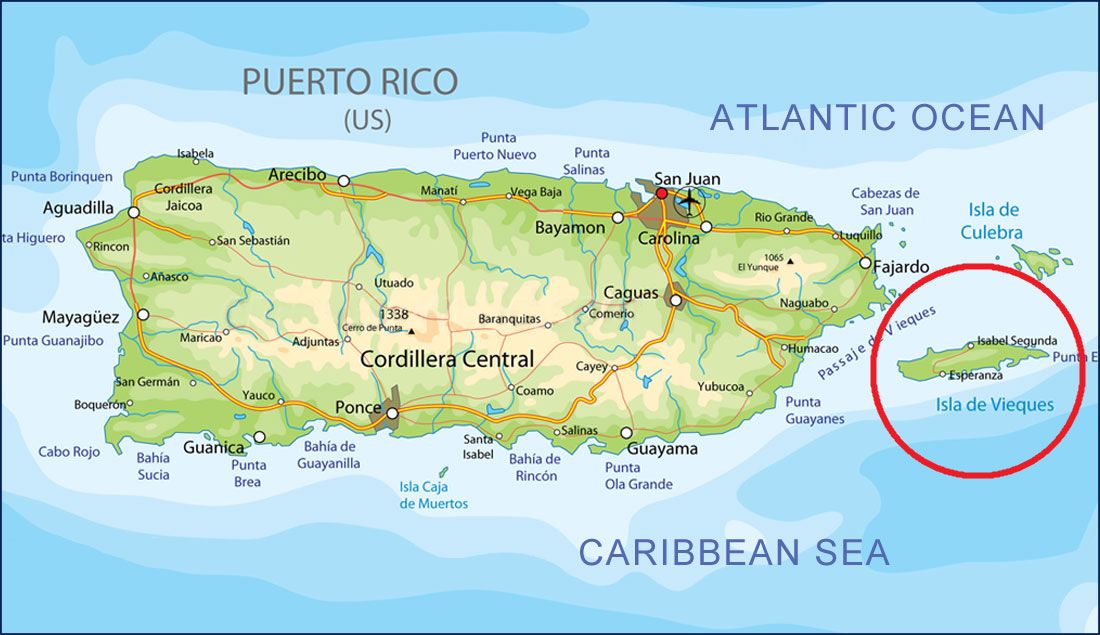 In Culebra, the most popular activities are beach combing, kayaking and hiking in serene uncrowded settings. If you love snorkeling, Culebra is the place, offering some of the healthiest coral reefs in the Caribbean. Dining is casual and relaxed with a calypso vibe, choose from a handful or seaside restaurants, and a few places in town serving more traditional Puerto Rican food.
In Culebra, the most popular activities are beach combing, kayaking and hiking in serene uncrowded settings. If you love snorkeling, Culebra is the place, offering some of the healthiest coral reefs in the Caribbean. Dining is casual and relaxed with a calypso vibe, choose from a handful or seaside restaurants, and a few places in town serving more traditional Puerto Rican food.
For an unforgettable vacation in Puerto Rico, we recommend a 2 night stay in Old San Juan, then flying to Culebra from SJU Airport for the remainder of your stay. Don’t miss exploring the San Juan National Historic Site, walk the streets of Old San Juan and enjoy the excellent dining experiences. After a good night rest from an active night of experiencing the vibrant nightlife of Old San Juan, head to Culebra for unforgettable days. In Culebra you’ll indulge swimming, snorkeling, relaxing and marveling on the pristine beaches of this beloved island. While in Culebra you may meet a community of visitors that choose to vacation in Culebra year after year, a few days in Culebra will make you a Culebra lover for life.
No need to travel across the globe to experience such a special place, Culebra is one of the islands of Puerto Rico. On a short 3.5 hour flight from major cities in the USA, you can arrive at the capital city of San Juan Puerto Rico.
An additional 30-minute flight or ferry ride to Culebra, and you’ll find yourself wrapped up in pure natural bliss. More about getting to Culebra, PR.
Hotels & Places to Stay in Culebra
Culebra offers a small boutique hotel, a handful of small inns and guesthouses, and a variety of vacation rentals to choose from. There are no high-rise oceanfront resorts, no hotel chains, or cookie-cutter accommodations in Culebra, part of the appeal for lovers of this island. Honeymooners, solo travelers, and families will find comfortable accommodations and friendly hospitality in Culebra Island. More about hotels / lodging in Culebra
Diving in Puerto Rico – DivingPlace
Diving in Puerto Rico
The island that separates the Dominican Republic and the British Virgin Islands in the Caribbean Sea, representing a predominantly mountainous landscape with coastal areas to the north and south, is Puerto Rico. It was discovered by Christopher Columbus in 1493 and it remained under Spanish rule for 4 centuries. In 1898, after the Spanish–American War, Puerto Rico was ceded to the United States under the Treaty of Paris. Its capital, San Juan, is a vibrant modern city that is home to about half of the country’s population. While the island remains a territory of the United States, its official language is Spanish and its culture is distinctly Caribbean.
It was discovered by Christopher Columbus in 1493 and it remained under Spanish rule for 4 centuries. In 1898, after the Spanish–American War, Puerto Rico was ceded to the United States under the Treaty of Paris. Its capital, San Juan, is a vibrant modern city that is home to about half of the country’s population. While the island remains a territory of the United States, its official language is Spanish and its culture is distinctly Caribbean.
Dive Sites
Puerto Rico has hot and humid weather all year round. The average land temperature in summer ranges from 27°C to 29°C and in winter from 21°C to 26°C. Sea water indicators vary between 26-30 ° C. Hurricane season from June to November. The best time to visit the island is from December to April when the weather is relatively dry. Visibility varies between 15-30 m, which is the best indicator for exploring the following dive sites:
Metropolitan San Juan
This is an easy beach dive in San Juan’s Condado area, perfect for beginner divers looking to hone their skills. Lava reefs with caves, tunnels and ledges provide shelter for flocks of snappers, Napoleons and gold sweepers. In the active spawning grounds of the inner and outer reefs, divers of all levels can encounter an impressive array of small tropical fish – French angels, jacks, blue wrasses, butterflyfish – that swim peacefully alongside seahorses, arrow crabs, coral shrimp, octopuses and bats. . Visibility under water is 3-6 meters. Condado Reef is also ideal for certification courses and night dives.
Lava reefs with caves, tunnels and ledges provide shelter for flocks of snappers, Napoleons and gold sweepers. In the active spawning grounds of the inner and outer reefs, divers of all levels can encounter an impressive array of small tropical fish – French angels, jacks, blue wrasses, butterflyfish – that swim peacefully alongside seahorses, arrow crabs, coral shrimp, octopuses and bats. . Visibility under water is 3-6 meters. Condado Reef is also ideal for certification courses and night dives.
La Parguera
The most famous bay for bioluminescence is in La Parguera, a small village in Southwest Puerto Rico. The local population of dinoflagellates literally illuminates the water at night, arranging an enchanting play of light. Divers can dive to coral formations and walls that many scuba divers consider to be the best in the Caribbean. There are also mangrove islands, with relatively shallow waters, where scuba divers can get close to manatees.
Mona Island
Mona Island, located 64 km west of the city of Mayagüez in Puerto Rico, is the Caribbean version of the Galapagos Islands. Known for pirate tales, cavernous cliffs, 90cm long iguanas, it offers unique diving conditions. Its waters are the clearest in Puerto Rico, with visibility up to 60 m. More than 270 species of fish have been found in Mona’s waters, including more than 60 reef-dwelling ones. Large marine animals such as turtles, whales and marlins visit the region during their migration. The island is surrounded by various types of coral reefs, underwater caves, cliffs and deep vertical walls. The most accessible dives are along the southern and western coasts.
Known for pirate tales, cavernous cliffs, 90cm long iguanas, it offers unique diving conditions. Its waters are the clearest in Puerto Rico, with visibility up to 60 m. More than 270 species of fish have been found in Mona’s waters, including more than 60 reef-dwelling ones. Large marine animals such as turtles, whales and marlins visit the region during their migration. The island is surrounded by various types of coral reefs, underwater caves, cliffs and deep vertical walls. The most accessible dives are along the southern and western coasts.
Palomino Wall
This wall dive is a sandy slope that descends from 5 to 25 meters. It has a dense and thick coral cover. And offers divers the opportunity to see truly rare marine animals. This dive site is located on the east side of San Juan. The dive site is covered with fans, gorgonians, sponges, and hard and soft corals. There are many hawk turtles and eagle rays. Dolphins are regular visitors to the area. It is interesting to watch them from a boat during a break between dives.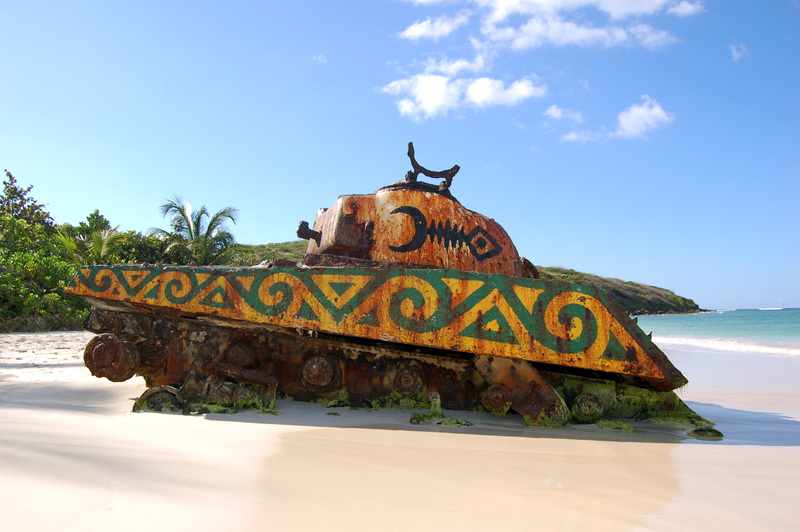
Southern Puerto Rico
The continental shelf breaks a few miles off the south coast, forming an impressive 32 km long wall. Compared to the wall in the Cayman Islands, this Puerto Rican version has become the newest world-class dive site in the Caribbean. The wall, which runs parallel to the coast from the seaside village of La Parguera to the city of Ponce, descends the slopes, drops sharply from 18 to 37 meters, and disappears into the sea at a depth of 457 meters. Surrounded by valleys and deep trenches, the dive site is shrouded in coral gardens, deep sea gorgonians and other exquisite coral formations. Visibility can exceed 30 m. Only in the vicinity of La Parguera there are more than 50 diving sites.
Fajardo
This coastal town in eastern Puerto Rico offers divers the opportunity to explore reefs, caves, mini-walls and channels alongside a chain of islets. The reefs are adorned with a variety of corals, from delicate gorgonians to huge heads. Visibility is usually over 15m.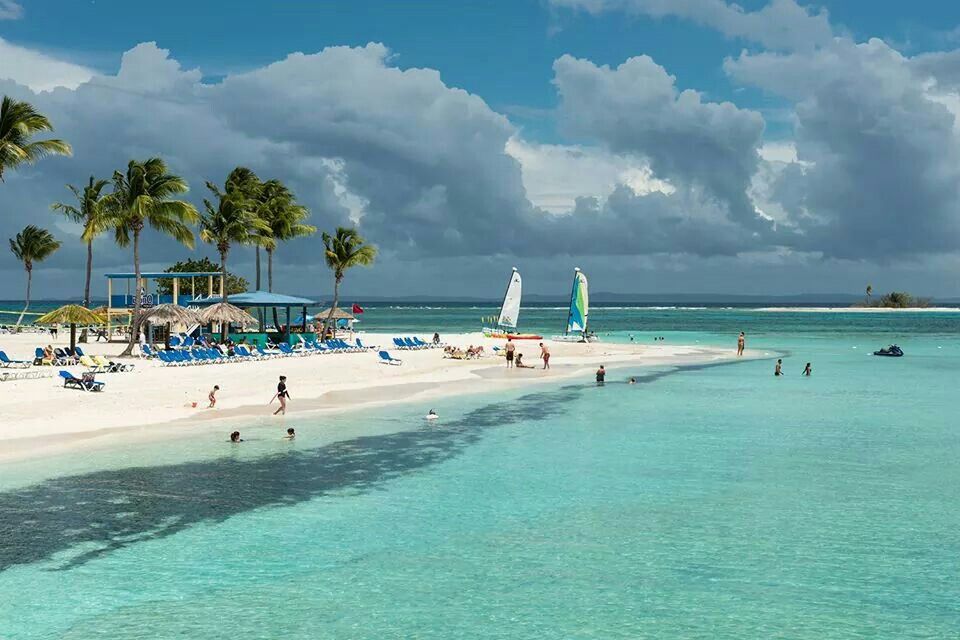 Divers can hand feed many of the reef fish found in the area. Sand channels and a unique double-barrier reef surround Palomino Island. Striped pufferfish and parrotfish can often be seen here. Cayo Diablo, further east, is a treasure trove of corals and marine life, from green moray eels and barracudas to octopuses and rare manatees.
Divers can hand feed many of the reef fish found in the area. Sand channels and a unique double-barrier reef surround Palomino Island. Striped pufferfish and parrotfish can often be seen here. Cayo Diablo, further east, is a treasure trove of corals and marine life, from green moray eels and barracudas to octopuses and rare manatees.
Humacao Region
South of Fajardo there are about 24 dive sites within an 8 km radius of the coast. Overhangs, caves and tunnels are found at a depth of 18 m along Basslet Reef. The reef itself is 1.6 km long, and dolphins come here in spring. Cracks, a labyrinth of caves and boulders are home to sea gobies and lobsters. With visibility often exceeding 30 m, the reserve is an ideal place for scuba diving. Divers in moderate currents can drift with nurse sharks and angelfish into a valley made up of straits and ledges. Experienced divers will be interested in the wall, which drops from 24 to 354 m.
Las Cuevas
If you like exploring caves, this is the perfect place to dive.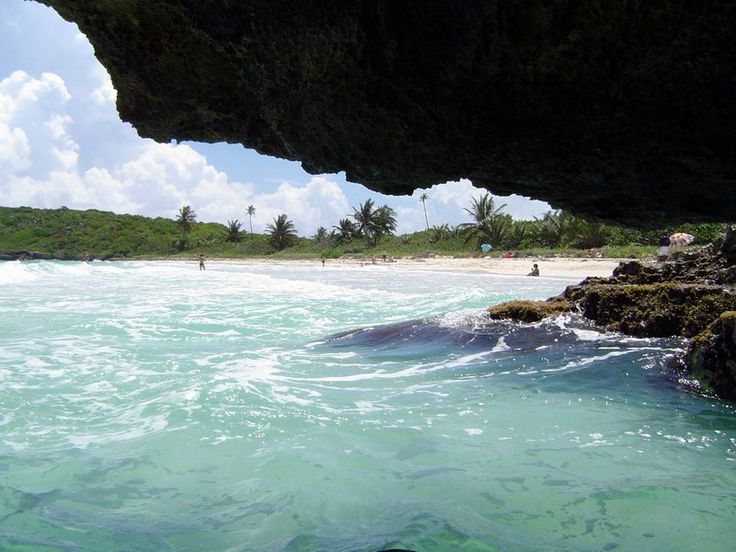 The caves provide a good refuge for many marine animals who enjoy the safety of the natural terrain. Here you can find a lot of moray eels, shrimps, camouflaged crabs, lobsters and sharks resting on the sand. Invertebrates like small cracks and crevices that are easy to see in the reflective light of divers’ underwater lights.
The caves provide a good refuge for many marine animals who enjoy the safety of the natural terrain. Here you can find a lot of moray eels, shrimps, camouflaged crabs, lobsters and sharks resting on the sand. Invertebrates like small cracks and crevices that are easy to see in the reflective light of divers’ underwater lights.
Candyland
This is a relatively shallow dive site that allows intermediate divers to enjoy stunning scenery. It is advisable to bring a camera with you to capture underwater beauty. This dive site is known for its rich collection of corals, the vibrant colors of which are simply mesmerizing. Underwater fauna is represented by butterfly fish, bats, moray eels and dancing parrot fish.
Source Efra’s Wall
This dive site is a real explosion of underwater flora and fauna. A canyon is carved into the wall, which was captured by the Gorgonians. This is a relatively deep dive where the reef starts at a depth of 16 meters and drops to 30 meters.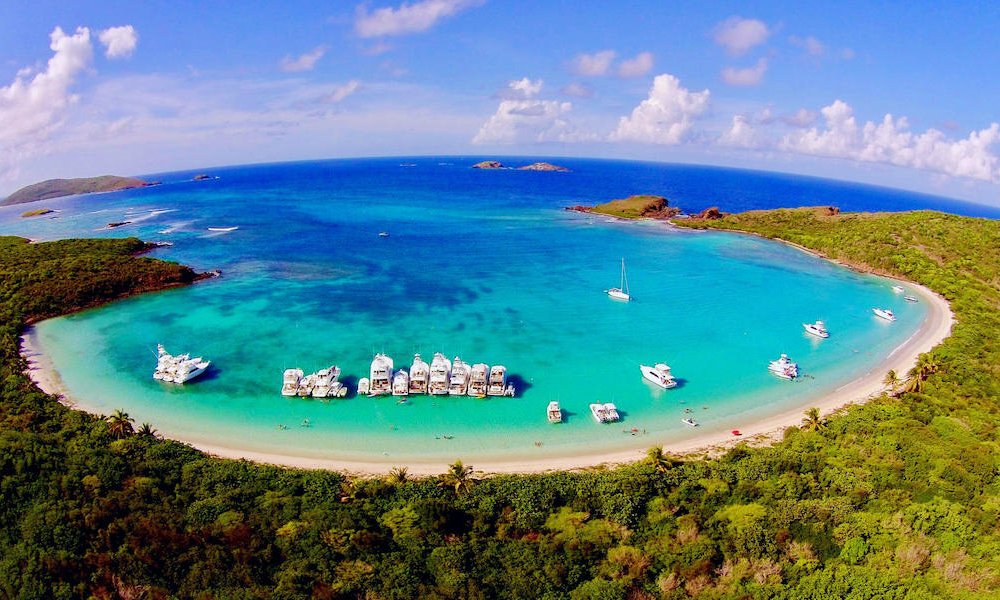 Scuba divers will swim among whip corals, large golden zoanthids, green sponges and colorful fans. Here you can find brightly colored crabs, cleaner shrimp and starfish. There are also large black coral forests that are home to schooling black durgas and striped parrotfish.
Scuba divers will swim among whip corals, large golden zoanthids, green sponges and colorful fans. Here you can find brightly colored crabs, cleaner shrimp and starfish. There are also large black coral forests that are home to schooling black durgas and striped parrotfish.
Getting there
The fastest and most efficient way to get to Puerto Rico is by plane. Flights from around the world land at San Juan Luis Munoz Marin International Airport on Isla Verde. Domestic flights are provided by the air gates of Isla Grande Airport in Miramar. Among the local airlines that provide air traffic, it is worth highlighting: Air Flamenco, Vieques Air, Link Cape Air.
At the airport, you can catch Taxi Turístico, which has a company badge on its logo. They can also be found in special parking lots at various points in San Juan, including Plaza de Armas and a few steps from Colón Square. Taxi fares from the airport to Condado, Old San Juan and Isla Verde start at $15.
Puerto Rico public buses run to all parts of the island.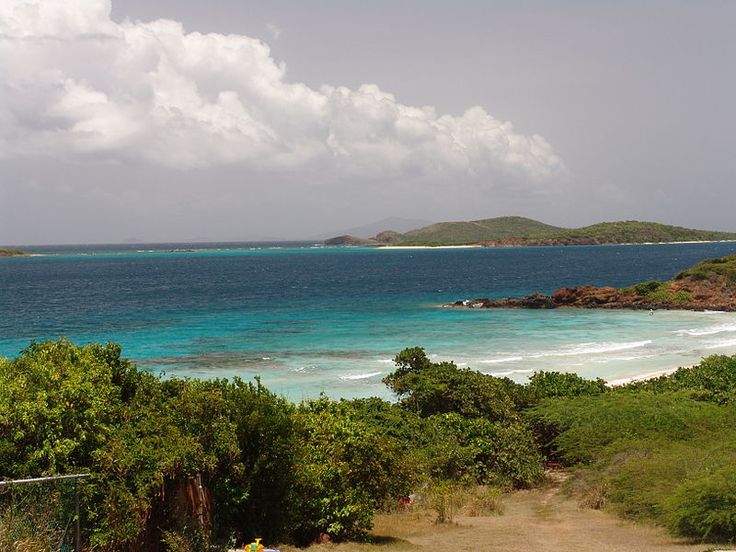 Tourists in San Juan will be most interested in two lines: the A5, which runs from Old San Juan to Isla Verde, and the B21, which runs between Old San Juan, Condado and the Plaza Las Américas shopping center in Hato Rey. The Department of Transportation operates an efficient Metrobus, which has the most extensive network in the city.
Tourists in San Juan will be most interested in two lines: the A5, which runs from Old San Juan to Isla Verde, and the B21, which runs between Old San Juan, Condado and the Plaza Las Américas shopping center in Hato Rey. The Department of Transportation operates an efficient Metrobus, which has the most extensive network in the city.
Dive Clubs
In Puerto Rico, despite the huge number of interesting dive sites, there are not many dive centers worthy of attention. Although there are schools capable of providing a high level of service and certification for various courses of study. Among the popular clubs, where experienced instructors work and there are modern diving equipment, the following deserve attention:
- Caribe Aquatic Adventures. This is a dive center run by Karen and Tony Vega. The NAUI & PADI Club offers diving and snorkelling in Escambron Park behind the Normandie Hotel. Divers have access to four dives per day, snorkelling tours, open water resort scuba diving training and specialty courses.
 Also, island snorkeling picnics are organized on the islands of the east coast. Small groups, individual attention – the main principle of the center.
Also, island snorkeling picnics are organized on the islands of the east coast. Small groups, individual attention – the main principle of the center. - Unlimited Divers S-22222. It has a professional staff offering a variety of water sports. Diving tours are organized here for both adults and young scuba divers. Unlimited Divers is a certified dive center offering a variety of courses from beginner to dive master. The main goal of the club is to provide affordable, modern and exciting, and most importantly, safe scuba diving training.
- Neptune’s Divers of Puerto Rico. The PADI Center is more than a scuba diving organization, it is a close-knit family of like-minded people. The main shore diving sites are located in the vicinity of Vega Baja, Manati, and also in the Arecibo areas. Experienced instructors guarantee that every dive to popular dive sites will be fun and safe.
Diving Reviews
Diving in Puerto Rico is a great way to get active on your vacation. Scuba diving enthusiasts will be able to experience the richness and splendor of underwater life while diving in warm and clear waters. Puerto Rico has plenty of coral reefs, caves and sea walls for divers of all skill levels. The waters surrounding the island are home to schools of colorful fish, including parrotfish, butterflyfish, moray eels, nests, blue wrasses, octopuses, barracudas, napoleons and seahorses. The best diving sites are off the south, east and west coasts of the island. Although diving straight off the beach at San Juan on the north coast takes divers into a world of lava reefs interspersed with caves, tunnels and ledges that provide shelter for schools of bass, copper brush, soft and hard corals.
Scuba diving enthusiasts will be able to experience the richness and splendor of underwater life while diving in warm and clear waters. Puerto Rico has plenty of coral reefs, caves and sea walls for divers of all skill levels. The waters surrounding the island are home to schools of colorful fish, including parrotfish, butterflyfish, moray eels, nests, blue wrasses, octopuses, barracudas, napoleons and seahorses. The best diving sites are off the south, east and west coasts of the island. Although diving straight off the beach at San Juan on the north coast takes divers into a world of lava reefs interspersed with caves, tunnels and ledges that provide shelter for schools of bass, copper brush, soft and hard corals.
On the east coast, areas with many attractions are located around Fajardo, the Humacao region and the islands of Palomino, Culebra and Vieques. The islands are great for night diving and have some of the most impressive bioluminescence in the world. Cayo Diablo is also a great place to visit, known among divers as a treasure trove of coral and marine life.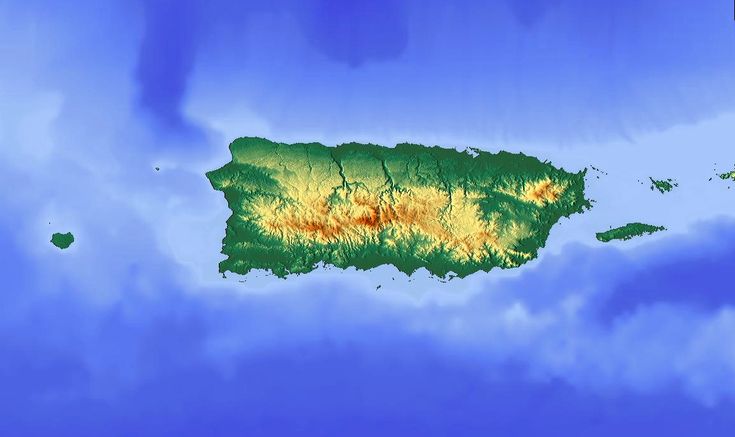 Culebra Island boasts over 50 dive sites. Including cave dives, natural tunnels, walls and shipwrecks, as well as endless coral reefs. The areas of Patti’s Reef and Angel Reef are great for beginning scuba divers.
Culebra Island boasts over 50 dive sites. Including cave dives, natural tunnels, walls and shipwrecks, as well as endless coral reefs. The areas of Patti’s Reef and Angel Reef are great for beginning scuba divers.
| Puerto Rico – freely acceded state US | |
• | Puerto Rico – freely acceded state Dominican Republic. Puerto Rico (“Rich Port”) was opened Christopher Columbus Tourists are usually attracted by the warm climate, almost no Capital – San Juan – one of the oldest Colonial “core” – the old part of San Juan, where else Only 8 km from San Juan is the largest Arecibo – municipality in Vieques – second largest island Culebra is a small island located in Mona – an island located in the Mona Strait Second largest city Puerto Rico – Ponce , Rincon is San Germán – a picturesque town located Straits between “Puerto Rican Bali” – Mona Island Puerto Rico has many famous dive sites. What is it worth |
 del Carmen – July
del Carmen – July  Also, island snorkeling picnics are organized on the islands of the east coast. Small groups, individual attention – the main principle of the center.
Also, island snorkeling picnics are organized on the islands of the east coast. Small groups, individual attention – the main principle of the center. The local Indians were good
The local Indians were good Held many
Held many Stone fortifications stretch along the entire northern side
Stone fortifications stretch along the entire northern side

 The city that is often
The city that is often
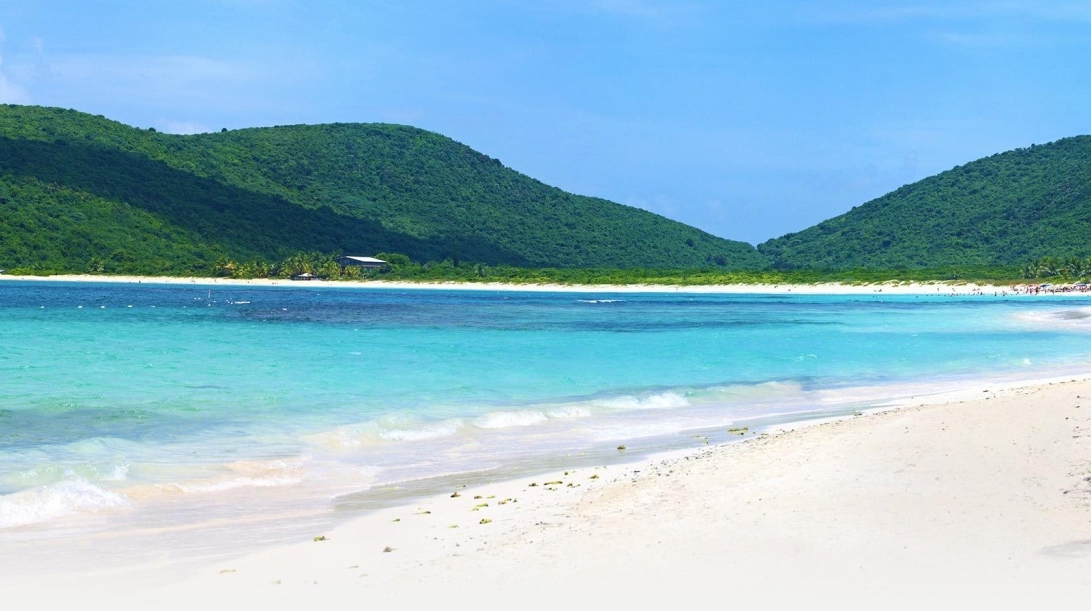 Now the church has been restored, and in its aisles is stored
Now the church has been restored, and in its aisles is stored